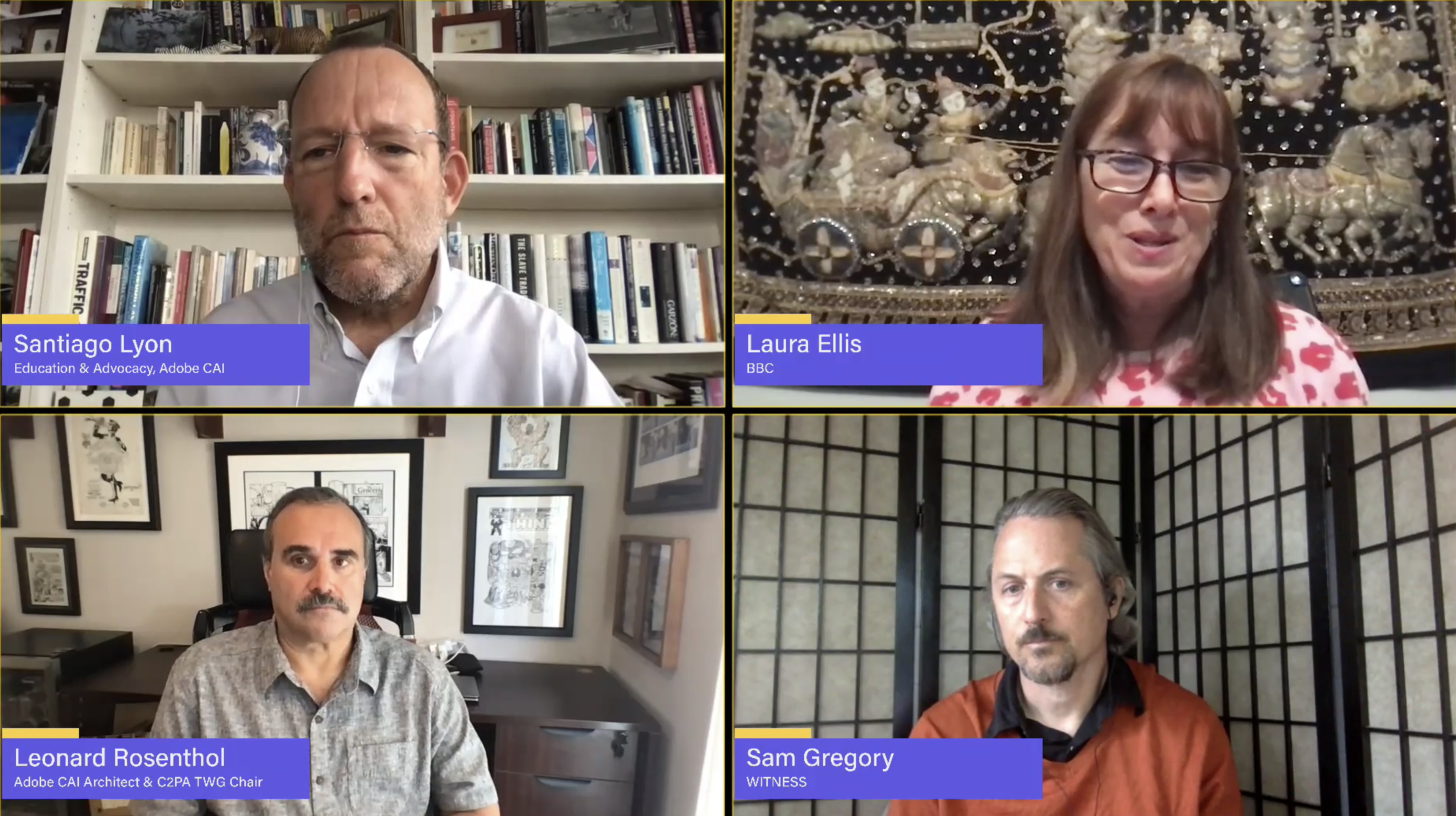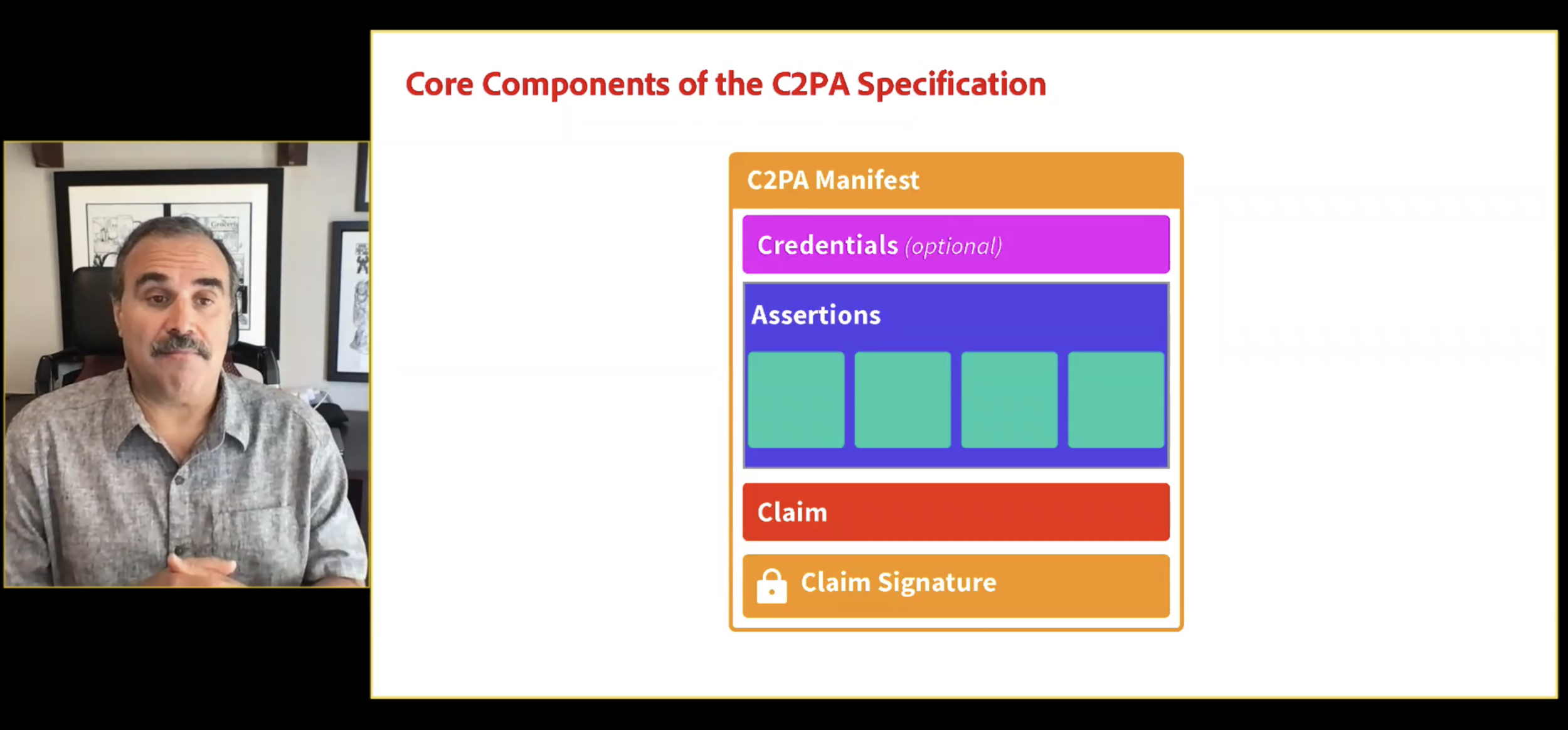Exploring the Open Standard for Content Provenance: The C2PA Draft Specification and the Path to Adoption
Last month, CAI members gathered virtually to dive into the draft specification of the open standard being developed by the C2PA (Coalition for Content Provenance and Authenticity). We explained for a general audience how C2PA contributors are working together to create the standard for content provenance, what it means for the CAI community, and how publishers, developers, content producers and others can implement this technology.

We discussed the work moving toward creating the open standard. The C2PA has grown beyond its founding members and current steering committee to a group of over 30 contributing members. Featured in the event were members from C2PA, CAI, and Project Origin (a BBC & Microsoft-led project working towards newsroom-specific implementation of the C2PA standard).
Santiago Lyon, the CAI’s Head of Advocacy & Education moderated the panel, featuring Adobe’s Leonard Rosenthol (chair of the C2PA technical working group) Sam Gregory of the human rights group WITNESS (and a member of the C2PA’s Threats and Harms working group) and Laura Ellis representing the BBC and Project Origin.
Leonard kicked off with an introduction to the core of the C2PA specification — the C2PA manifest — and its three main elements:
- Assertions (statements of facts or trust)
- Credentials (information about who created and produced a piece of media)
- Claims (combining the assertions with bindings which are then cryptographically signed as the claim signature)
These three elements are used as signals to help assess how trustworthy an asset is, since trust is not a single value or an individual check box but a collection of signals to help determine if you can trust the asset you’re looking at.

Laura talked about the value of investing work in the C2PA now and how the work is delivering the realistic possibility we can actually implement the standard as a force for good.
Sam, from WITNESS, explained that human rights defenders need to make very purposeful decisions about how they share data and their associated identities. In an era when many more people are filming and documenting human rights violations around the world, it is important to build an infrastructure with an open and privacy-protecting, non-exclusionary system. Those are core human rights values: linking global freedom of expression with global privacy.
Both Leonard and Sam discussed the principles that have anchored the work of the C2PA (read the C2PA guiding principles in full), and the significant work being done by the Threats and Harms task force on how to mitigate misuse without favoring one set of users over another.
The C2PA continues to welcome and encourage feedback of all kinds of the draft specification here.
Audience questions sparked robust conversation among the panelists around media literacy, synthetic media, security of the standard, and much more. You can watch the full panel and Q&A in the event recording here.
If you’re not yet a member of the CAI, please consider joining now to get our updates, news, and invites to our quarterly events. We are a community of over 375 members, focused on promoting and driving the open industry standard for content authenticity and provenance in three main pillars:
Education and advocacy around the CAI technology to fight misinformation and empower creators.
Collaboration between members to implement these technologies anywhere transparency matters
The open development of standards to help build a global ecosystem for provenance.
Get in touch, follow us on Twitter, and reach out if you’re interested in building things with us or other members (you can view the full list here).